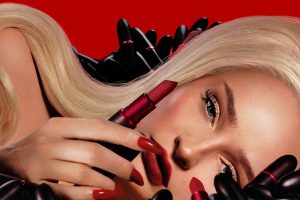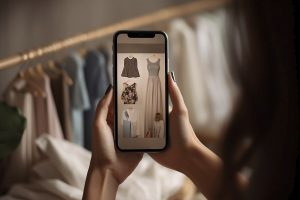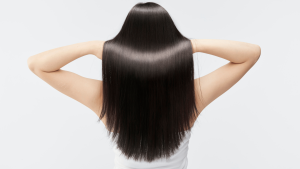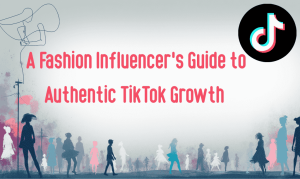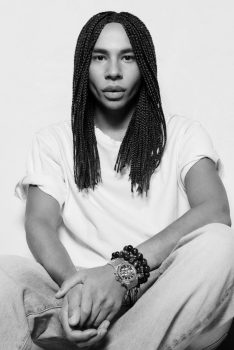Zara’s TRF collection is all about capturing the latest trends and making them accessible to everyone. This approach not only keeps the brand relevant but also ensures that customers find what they want, when they want it. In this article, we’ll explore what TRF in Zara really means, how they identify trends, and the impact of their fast fashion model on the industry and environment. We’ll also discuss how technology and marketing play a role in Zara’s success and how they adapt their styles globally.

Key Takeaways
- TRF in Zara stands for “Trafaluc,” focusing on youthful and trendy designs.
- Zara uses customer feedback and data analysis to identify emerging trends.
- The fast fashion model allows Zara to quickly adapt designs and stock new items in stores.
- Zara is working on sustainability while balancing trendiness and eco-friendliness.
- Technology plays a key role in Zara’s operations, enhancing inventory management and customer experience.
The Concept of TRF in Zara
Defining TRF in Zara
Okay, so what is TRF in Zara? It’s basically Zara’s younger, trendier line, aimed at teens and young adults. Think of it as Zara’s way of staying super relevant with the latest styles. It’s not just about clothes; it’s a whole vibe. TRF collections often feature bolder designs, edgier cuts, and a generally more playful aesthetic than Zara’s main line. It’s where you’ll find those statement pieces that everyone’s talking about. It’s a smart move by Zara to capture a wider audience, ensuring they’ve got something for everyone, no matter their age or style preference. It’s also a great way to test out new trends before they potentially hit the mainstream Zara collections. You can find brand value in TRF.
The Importance of TRF
Why is TRF so important to Zara? Well, it’s all about staying ahead of the curve. Fast fashion is a cutthroat business, and you’ve got to constantly innovate to keep customers interested. TRF allows Zara to quickly respond to emerging trends, capturing the attention of younger consumers who are often the first to embrace new styles. It also helps Zara maintain its image as a fashion-forward brand. Plus, it’s a great way to build brand loyalty early on. If you get someone hooked on TRF in their teens, they’re more likely to stick with Zara as they get older. Here are some reasons why TRF is important:
- Attracting younger customers.
- Staying on top of trends.
- Building brand loyalty.
TRF is more than just a sub-brand; it’s a strategic tool that allows Zara to stay competitive and relevant in the ever-changing world of fashion. It’s about understanding the needs and desires of a specific demographic and catering to them in a way that feels authentic and engaging.
How TRF Influences Collections
TRF doesn’t just exist in its own little bubble; it actually has a significant impact on Zara’s overall collections. The trends that take off in TRF often find their way into Zara’s main line, albeit in a more refined and accessible way. It’s like TRF is the testing ground for new ideas, and Zara is the curator, selecting the best and most wearable trends for a wider audience. This allows Zara to stay fresh and innovative without alienating its core customer base. Zara employees are trained to listen to customer feedback, and customer insights are key. It’s a pretty smart system, really. It ensures that Zara is always on-trend, without being too risky or out-there. It’s all about balance, and TRF plays a crucial role in achieving that balance.
Zara’s Approach to Trend Identification
Zara’s TRF collections are all about staying on top of what’s hot. But how exactly does Zara figure out what’s trending and what customers want to wear right now? It’s a mix of different strategies, all working together to keep their collections fresh and appealing.
Customer Feedback Mechanisms
Zara really listens to its customers. It’s not just about reading reviews online; they have systems in place to gather feedback from various sources. Store employees are trained to pay attention to what customers are saying, what they’re trying on, and what they’re buying. This info is then passed up the chain to the design teams. This direct line of communication helps Zara quickly understand what’s working and what’s not.
- In-store surveys and feedback forms
- Social media monitoring for mentions and comments
- Analyzing return rates and reasons for returns
Utilizing Data Analytics
Data is king, and Zara knows it. They use data analytics to track sales, identify popular items, and predict future trends. This isn’t just about looking at what sold well last week; it’s about understanding patterns and making informed decisions about what to produce next. They analyze customer experience data from online and offline sources to get a complete picture of what’s driving sales. This helps them to optimize their inventory and make sure they’re stocking the right items in the right stores.
The Role of Store Managers
Store managers are key players in Zara’s trend identification process. They’re on the front lines, interacting with customers every day and observing what’s happening in their local markets. They provide valuable insights into regional preferences and emerging trends. Store managers also play a role in Italian fashion by providing feedback on which styles resonate with their local clientele. They communicate this information to headquarters, helping Zara tailor its collections to different regions. It’s a decentralized approach that allows Zara to be responsive to local tastes and preferences.
Zara’s success isn’t just about fast fashion; it’s about smart fashion. By combining customer feedback, data analytics, and the insights of store managers, they’ve created a system that allows them to quickly identify and respond to emerging trends. This agility is what sets them apart and keeps their TRF collections relevant and in demand.
The Fast Fashion Model Explained
Understanding Fast Fashion
Fast fashion is all about speed. It’s a business model focused on quickly producing and distributing trendy clothing at affordable prices. Zara is a prime example of a company that has mastered this approach. The core idea is to get the latest styles from the runway or street to consumers as fast as possible. This often means shorter production cycles and a constant stream of new items in stores. It’s a system designed to encourage frequent purchases, driven by the ever-changing nature of trends. It’s not just about clothes; it’s about the whole experience of staying current and fashionable without breaking the bank.
Zara’s Production Cycle
Zara’s production cycle is remarkably efficient. Unlike many retailers that outsource production, Zara controls a significant portion of its supply chain. This allows them to drastically reduce lead times. Here’s a simplified breakdown:
- Trend Identification: Designers quickly spot emerging trends.
- Design & Production: New designs are created and manufactured rapidly, often in-house or at nearby workshops.
- Distribution: Garments are quickly shipped to stores worldwide.
- Retail: New items arrive in stores multiple times a week, keeping the selection fresh and exciting.
Zara’s ability to adapt designs, produce, distribute, and stock new clothing in stores within a couple of weeks is a key differentiator. This speed allows them to capitalize on fleeting trends and minimize the risk of unsold inventory.
Impact on Consumer Behavior
The fast fashion model has a significant impact on how people shop. The constant availability of new styles encourages frequent visits to stores and online platforms. The affordable prices make it easier for consumers to buy more items, even if they don’t necessarily need them. This creates a cycle of consumption, where clothing is often seen as disposable. The rapid turnover of collections also creates a sense of urgency, prompting consumers to buy items before they disappear. This fast fashion business model has reshaped the fashion industry and consumer expectations.
Sustainability and TRF in Zara
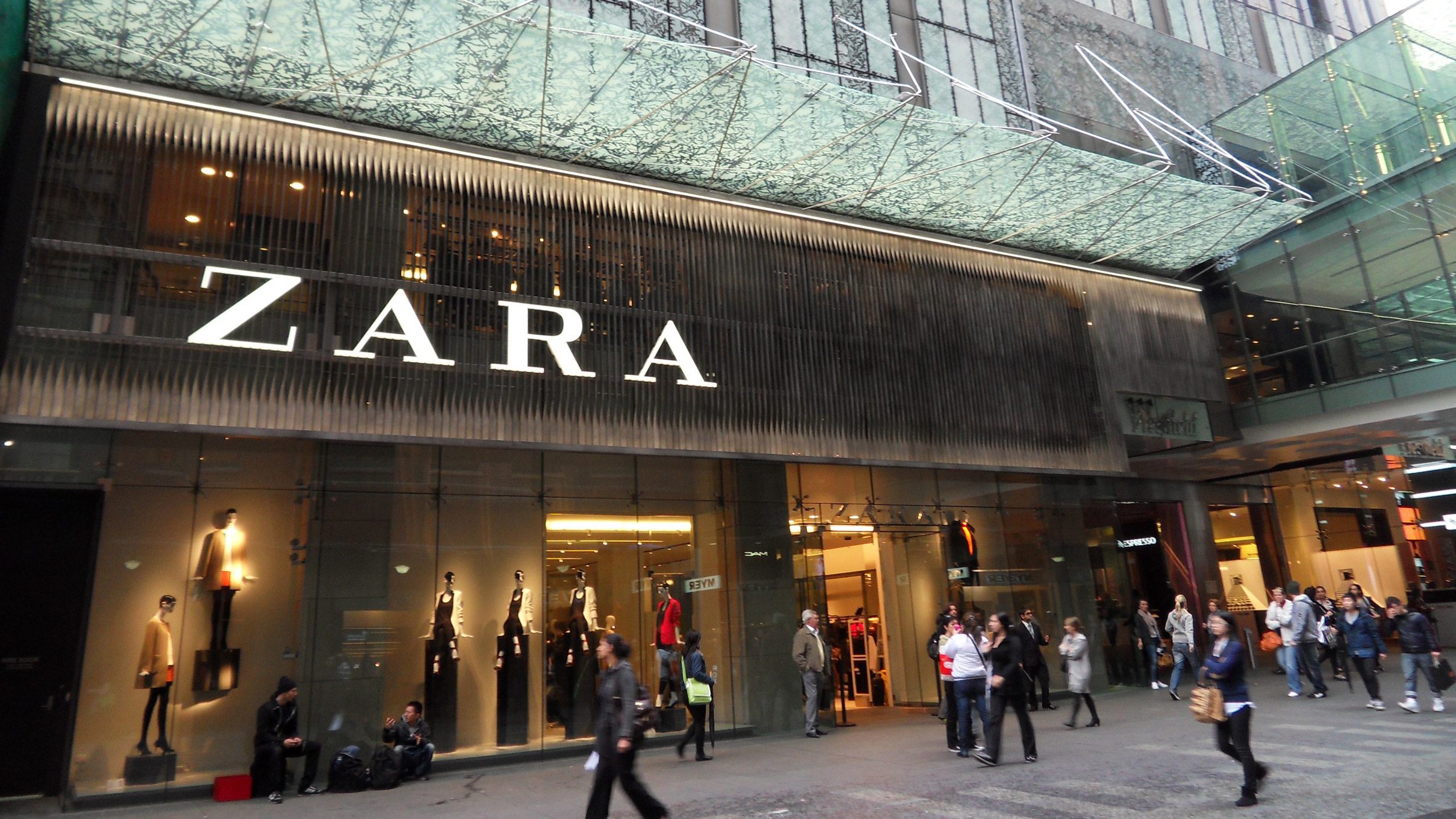
Zara’s Sustainability Initiatives
Okay, so Zara’s been getting a lot of questions about how sustainable they actually are, especially with their super-fast fashion model. They’ve started rolling out a few initiatives, which is a start. For example, they have programs for collecting used clothing in their stores, which is then either reused, recycled, or repurposed. It’s a step in the right direction, but there’s still a long way to go. They’re also trying to use more sustainable materials, like organic cotton and recycled fibers, in some of their collections.
Here’s a quick look at some of their efforts:
- Clothing Collection Program
- Use of Sustainable Materials
- Water Reduction Programs
It’s important to remember that sustainability isn’t just about materials; it’s also about the entire production process, from water usage to fair labor practices. Zara’s working on it, but transparency is key, and there’s always room for improvement.
Balancing Trends with Eco-Friendliness
This is where things get tricky. TRF is all about the latest trends, and those trends change, like, every five minutes. So, how do you keep up with that pace while also being kind to the planet? It’s a tough balancing act. Zara’s trying to find ways to make trend-driven pieces more sustainably, but it’s a challenge. One approach is to design clothes that are more versatile and can be worn in different ways, so people don’t feel the need to constantly buy new stuff. Another is to focus on quality, so clothes last longer. But let’s be real, the core of fast fashion is still about getting people to buy more, more often. It’s a system that inherently clashes with sustainability. You can check out some resources on fashion sustainability to learn more.
Consumer Expectations and Sustainability
Consumers are getting smarter and more aware. People are starting to ask questions about where their clothes come from and what impact they have. This is putting pressure on brands like Zara to be more transparent and accountable. More and more, shoppers want to support companies that align with their values, and that includes sustainability. This means Zara needs to not only implement eco-friendly practices but also communicate them effectively to consumers. If they don’t, they risk losing customers who are looking for sustainable fashion choices. It’s not just about doing good; it’s also about good business. Consumers are voting with their wallets, and sustainability is becoming a major factor in their decisions.
Global Adaptation of TRF Styles
Cultural Influences on Design
Okay, so when TRF goes global, it’s not just a simple copy-paste situation. They really have to think about cultural nuances. What’s trendy in New York might not fly in Tokyo, right? Designers need to understand local tastes, religious considerations, and even climate differences. For example, a super revealing top might be a hit in some places, but totally inappropriate in others. It’s a fascinating balancing act of staying true to the TRF vibe while respecting different cultures. It’s like they’re saying, “Hey, we see you, and we want to make cool clothes that work for you.”
Regional Variations in Collections
TRF collections aren’t identical across the globe, and that’s on purpose. You’ll see regional variations that cater to specific markets. Think about it: someone in Miami is going to need different clothes than someone in London. So, you might find brighter colors and lighter fabrics in warmer climates, while colder regions get more layers and darker tones. Also, sizing can be different to better fit the local population. This localization strategy is key to TRF’s success, because it shows they’re paying attention to what people actually want to wear in different parts of the world. It’s not a one-size-fits-all approach, and that’s what makes it work.
Case Studies of Successful Adaptations
Let’s look at some examples of how TRF nailed it with global adaptations. One example is their approach to modest fashion in the Middle East. They introduced longer hemlines, looser fits, and incorporated traditional patterns into their designs. This wasn’t just about covering up; it was about creating stylish options that aligned with local customs. Another success story is in Asia, where they’ve embraced the trend of fashion trends with smaller sizes and designs that cater to petite frames. And in South America, they’ve really leaned into bold colors and prints that reflect the vibrant culture. These case studies show that TRF isn’t just selling clothes; they’re selling a sense of belonging and understanding. They are also adapting to Raf Simons design philosophy.
It’s interesting to see how a global brand like Zara can be so flexible and responsive to different cultural contexts. It shows that understanding your audience is the most important thing, no matter where they are in the world.
Here are some key elements of successful adaptations:
- In-depth market research
- Collaboration with local designers
- Flexibility in design and production
- Respect for cultural norms
The Role of Technology in TRF

RFID and Inventory Management
Okay, so imagine trying to keep track of thousands of trendy items flying off the shelves. That’s where RFID comes in for Zara’s TRF line. RFID (Radio-Frequency Identification) tags are like super-powered barcodes that don’t need to be scanned individually. They let Zara know exactly what’s in stock, where it is, and when it needs to be replenished. This tech is a game-changer, cutting down on lost sales and making sure the latest styles are always available. It’s all about speed and accuracy in the fast-fashion world.
E-commerce Integration
E-commerce is huge, right? Zara knows this, and they’ve put a lot of effort into making their online shopping experience smooth. Think about it: you see a cute top on Instagram, and you want it now. Zara’s website and app are designed to make that happen. They use data to personalize recommendations, making sure you see stuff you’ll actually like. Plus, things like easy returns and multiple payment options make online shopping a breeze. It’s all about blending the online and offline worlds for maximum convenience. Zara efficiently gathers information regarding its sales.
Enhancing Customer Experience Through Tech
Zara uses technology to make shopping more enjoyable. Self-checkout kiosks speed up the buying process. Mobile apps offer personalized recommendations and easy access to product information. Some stores are even experimenting with interactive displays and virtual try-on features. It’s all about creating a fun, engaging experience that keeps customers coming back.
Technology is not just about efficiency; it’s about creating a better connection with the customer. By understanding their preferences and providing convenient shopping solutions, Zara can build loyalty and drive sales. It’s a win-win situation for both the brand and the consumer.
Here are some ways Zara enhances customer experience:
- Personalized recommendations based on browsing history
- Mobile app with barcode scanning for product details
- In-store interactive displays for style inspiration
Marketing Strategies for TRF Collections
Social Media Engagement
TRF, being targeted towards younger demographics, relies heavily on social media for marketing. Platforms like Instagram and TikTok are key for showcasing new arrivals and styling ideas. Zara uses these channels to create a sense of community, encouraging customers to share their TRF looks using specific hashtags. User-generated content is often reposted, providing social proof and driving engagement. They also run interactive campaigns, like polls and quizzes, to keep their audience interested and gather feedback on upcoming collections. It’s all about creating a constant conversation and making customers feel like they’re part of the TRF world.
Influencer Collaborations
Partnering with influencers is a cornerstone of TRF’s marketing strategy. Zara collaborates with a diverse range of influencers, from micro-influencers with niche followings to larger personalities with broader reach. These collaborations typically involve influencers styling TRF pieces, creating content showcasing the clothes in their daily lives, and promoting exclusive discounts or collections. The goal is to tap into the influencer’s existing audience and leverage their credibility to drive sales and boost brand awareness. It’s a way to make the brand feel more relatable and accessible to potential customers.
In-Store Promotions and Events
While digital marketing is crucial, TRF also utilizes in-store promotions and events to attract customers. These can range from special discounts and sales events to styling workshops and live music performances. The aim is to create a fun and engaging shopping experience that encourages customers to spend more time in the store and discover new TRF pieces.
In-store events are often promoted through social media and email marketing, creating a cohesive omnichannel experience. This integration ensures that customers are aware of the latest promotions and events, regardless of how they prefer to interact with the brand. It’s all about making shopping an experience, not just a transaction, and fashion designers know this well.
Here’s a simple example of how in-store promotions might be structured:
- Student Discount: 15% off for students with valid ID.
- Weekend Flash Sale: Select items 30% off for 24 hours.
- Loyalty Program: Earn points for every purchase, redeemable for discounts.
Wrapping Up: The Zara TRF Experience
In conclusion, Zara’s TRF collection is more than just a line of trendy clothes; it’s a reflection of how the brand listens to its customers and adapts quickly to their needs. By focusing on what shoppers want and responding faster than anyone else, Zara has carved out a unique place in the fashion world. The brand’s ability to mix local preferences with global trends shows just how well it understands its audience. As we look ahead, it will be interesting to see how Zara continues to evolve and keep up with the ever-changing fashion landscape. Whether you’re a loyal customer or just curious about the brand, Zara’s approach to fashion is definitely worth paying attention to.
Frequently Asked Questions
What does TRF stand for in Zara?
TRF stands for ‘Trafaluc’, which is Zara’s line that focuses on trendy and youthful styles.
Why is TRF important for Zara?
TRF is important because it helps Zara quickly respond to fashion trends, allowing them to offer fresh styles that appeal to younger shoppers.
How does Zara find out what trends to follow?
Zara listens to customer feedback, uses data analysis, and relies on store managers to spot trends and understand what customers want.
What makes Zara’s fast fashion model unique?
Zara’s fast fashion model is unique because it can design, produce, and deliver new clothing to stores in just a few weeks, keeping up with changing fashion.
What steps is Zara taking towards sustainability?
Zara is working on sustainability by using eco-friendly materials and trying to reduce waste in its production processes.
How does technology play a role in Zara’s TRF collection?
Technology helps Zara manage inventory and improve the shopping experience, making it easier for customers to find the latest styles.

Peyman Khosravani is a global blockchain and digital transformation expert with a passion for marketing, futuristic ideas, analytics insights, startup businesses, and effective communications. He has extensive experience in blockchain and DeFi projects and is committed to using technology to bring justice and fairness to society and promote freedom. Peyman has worked with international organizations to improve digital transformation strategies and data-gathering strategies that help identify customer touchpoints and sources of data that tell the story of what is happening. With his expertise in blockchain, digital transformation, marketing, analytics insights, startup businesses, and effective communications, Peyman is dedicated to helping businesses succeed in the digital age. He believes that technology can be used as a tool for positive change in the world.





